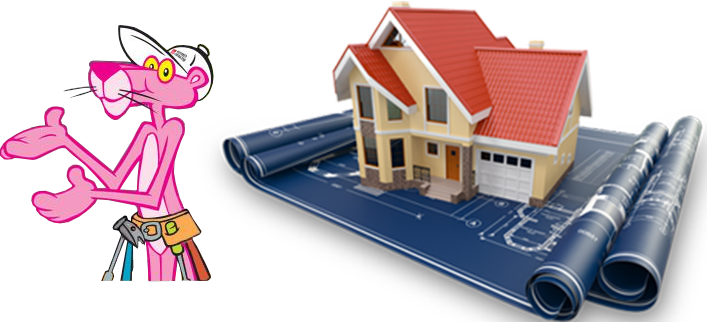Alabama’s climate—with its hot, humid summers, occasional severe storms, and chilly winters—can take a toll on your home or business. For residents and property owners in Huntsville, Madison, and across North Alabama, maximizing energy efficiency isn’t just about lowering utility bills; it’s about protecting your investment, enhancing comfort, and reducing long-term maintenance costs. The good news? Many of the most effective energy-saving upgrades start with your home’s exterior—particularly your roofing, siding, and insulation systems.
As a trusted roofing and exterior improvement contractor serving residential, commercial, and industrial clients in the region, we’ve seen firsthand how strategic upgrades can transform a property’s efficiency, durability, and curb appeal. Whether you’re dealing with an aging roof, drafty siding, or storm damage, the right improvements can make a real difference in your energy consumption—and your wallet.
In this guide, we’ll break down the top exterior home improvements to maximize energy efficiency in Alabama’s unique climate, with practical tips tailored to local homeowners and business owners. Let’s dive in.
1. Upgrade to a High-Performance Roofing System
Your roof is your first line of defense against the elements—and one of the biggest factors in your home’s energy efficiency. In North Alabama, where temperatures can swing from scorching summers to freezing winters, the right roofing material and installation can significantly reduce heating and cooling costs.
Why Roofing Matters for Energy Efficiency
- Reflectivity: Dark or worn-out roofs absorb heat, forcing your AC to work harder. Modern cool roofing materials (like reflective metal or light-colored shingles) can lower roof temperatures by up to 50°F, reducing cooling costs by 10–15%.
- Insulation: A well-insulated roof prevents heat transfer, keeping your home cooler in summer and warmer in winter. Poor attic insulation or ventilation can lead to moisture buildup and higher energy bills.
- Durability: Alabama’s storms (including hail and high winds) can damage roofs, leading to leaks and energy loss. Impact-resistant shingles or metal roofing systems offer longer lifespans and better protection.
Best Roofing Options for Alabama Homes & Businesses
For Residential Properties:
- Architectural Asphalt Shingles: A cost-effective choice with improved durability and wind resistance (look for Class 4 impact-rated shingles to qualify for insurance discounts).
- Metal Roofing: Ideal for long-term savings, metal roofs reflect heat, last 40–70 years, and withstand severe weather. Popular in Huntsville and Madison for both modern and traditional homes.
- Cool Roof Coatings: If you’re not ready for a full replacement, reflective coatings can extend your roof’s life and improve efficiency.
For Commercial & Industrial Properties:
- Standing-Seam Metal Roofs: Energy-efficient, low-maintenance, and excellent for large buildings (common in industrial parks and retail spaces).
- TPO or PVC Membrane Roofing: Flat or low-slope roofs benefit from these reflective, durable materials, which reduce heat absorption and lower HVAC costs.
Pro Tip:
Always pair a new roof with proper attic ventilation and insulation. Without it, even the best roofing material won’t perform optimally. We recommend a professional inspection to assess your current setup.
2. Invest in Energy-Efficient Siding Solutions
Siding does more than enhance your home’s appearance—it acts as a thermal barrier, protecting against heat loss, moisture, and air leaks. In Alabama’s humid climate, the wrong siding can lead to mold, rot, and skyrocketing energy bills. Upgrading to high-performance siding is a smart move for both efficiency and longevity.
How Siding Impacts Energy Efficiency
- Insulation: Older siding (like aluminum or wood) offers little insulation. Modern materials like insulated vinyl or fiber cement provide an extra layer of thermal resistance.
- Air Sealing: Gaps or cracks in siding allow conditioned air to escape, forcing your HVAC system to work harder. Properly installed siding creates a tighter envelope.
- Moisture Resistance: Alabama’s humidity can warp or degrade siding over time. Moisture-resistant materials prevent mold and structural damage.
Top Siding Choices for North Alabama
For Homes:
- Insulated Vinyl Siding: Affordable, low-maintenance, and available in styles that mimic wood. Look for .044”–.048” thickness for better durability.
- Fiber Cement Siding (e.g., James Hardie): Resistant to rot, pests, and fire, with excellent insulation properties. A top choice for historic homes in Huntsville’s older neighborhoods.
- Engineered Wood Siding: A budget-friendly alternative to traditional wood, offering better moisture resistance and energy efficiency.
For Commercial Buildings:
- Metal Siding Panels: Durable, reflective, and ideal for warehouses or retail spaces. Can be paired with insulation for added efficiency.
- EIFS (Exterior Insulation Finishing System): A continuous insulation system that reduces thermal bridging, often used in office buildings.
Pro Tip:
If you’re replacing siding, consider adding a house wrap (like Tyvek) beneath it. This breathable barrier blocks wind and moisture while allowing vapor to escape, improving both efficiency and longevity.
3. Seal and Insulate: The Hidden Energy Savers
Even the best roof and siding won’t perform optimally if your home lacks proper sealing and insulation. Air leaks around windows, doors, and penetrations (like vents or pipes) can account for 20–30% of heating and cooling loss. In Alabama’s climate, where AC runs for much of the year, these leaks add up fast.
Key Areas to Address
- Attic Insulation: Most older homes in North Alabama are under-insulated. The U.S. Department of Energy recommends R-38 to R-60 for attics in our region. Blown-in cellulose or spray foam are excellent upgrades.
- Window and Door Sealing: Caulking gaps and installing weatherstripping are quick, cost-effective fixes. For older homes, consider storm windows or low-E glass to reduce heat transfer.
- Ductwork: Leaky ducts in attics or crawl spaces waste energy. Sealing and insulating ducts can improve HVAC efficiency by up to 20%.
- Foundation and Crawl Spaces: Uninsulated crawl spaces allow cold air in winter and humid air in summer to seep into your home. Encapsulation with a vapor barrier and insulation solves this.
When to Call a Professional
While some sealing tasks (like caulking) are DIY-friendly, larger projects—such as attic insulation, duct sealing, or crawl space encapsulation—are best left to experts. A professional energy audit can pinpoint exactly where your home is losing efficiency, ensuring you invest in the right upgrades.
Local Insight:
In Huntsville and Madison, many homes built before the 1990s have minimal or degraded insulation. If your energy bills are consistently high, an insulation upgrade could pay for itself in just a few years—especially with Alabama’s hot summers.
4. Storm-Proofing for Long-Term Efficiency
Alabama’s severe weather—from tornadoes to hailstorms—can compromise your home’s energy efficiency overnight. A single storm can damage roofing, siding, or insulation, leading to leaks, drafts, and higher utility costs. Storm-proofing your exterior isn’t just about safety; it’s about maintaining efficiency year-round.
Storm-Resistant Upgrades to Consider
- Impact-Resistant Roofing: Class 4 shingles (like GAF’s Timberline HDZ) or metal roofing can withstand hail and high winds, reducing the risk of leaks and energy loss.
- Reinforced Siding: Fiber cement or engineered wood siding resists wind uplift and debris impact better than traditional vinyl or wood.
- Hurricane Straps and Sealants: Securing your roof to the walls with hurricane straps prevents uplift during storms. Waterproof underlayment (like synthetic felt) adds an extra moisture barrier.
- Gutter and Drainage Systems: Clogged or improperly sloped gutters can lead to water damage, which compromises insulation and structural integrity. Ensure your gutters are clean and directed away from the foundation.
After the Storm: What to Do
If your property sustains storm damage, act quickly to prevent long-term issues:
- Document damage with photos for insurance claims.
- Tarp or temporarily seal any roof leaks to prevent water intrusion.
- Schedule a professional storm damage assessment to identify hidden issues (like compromised insulation or structural weaknesses).














